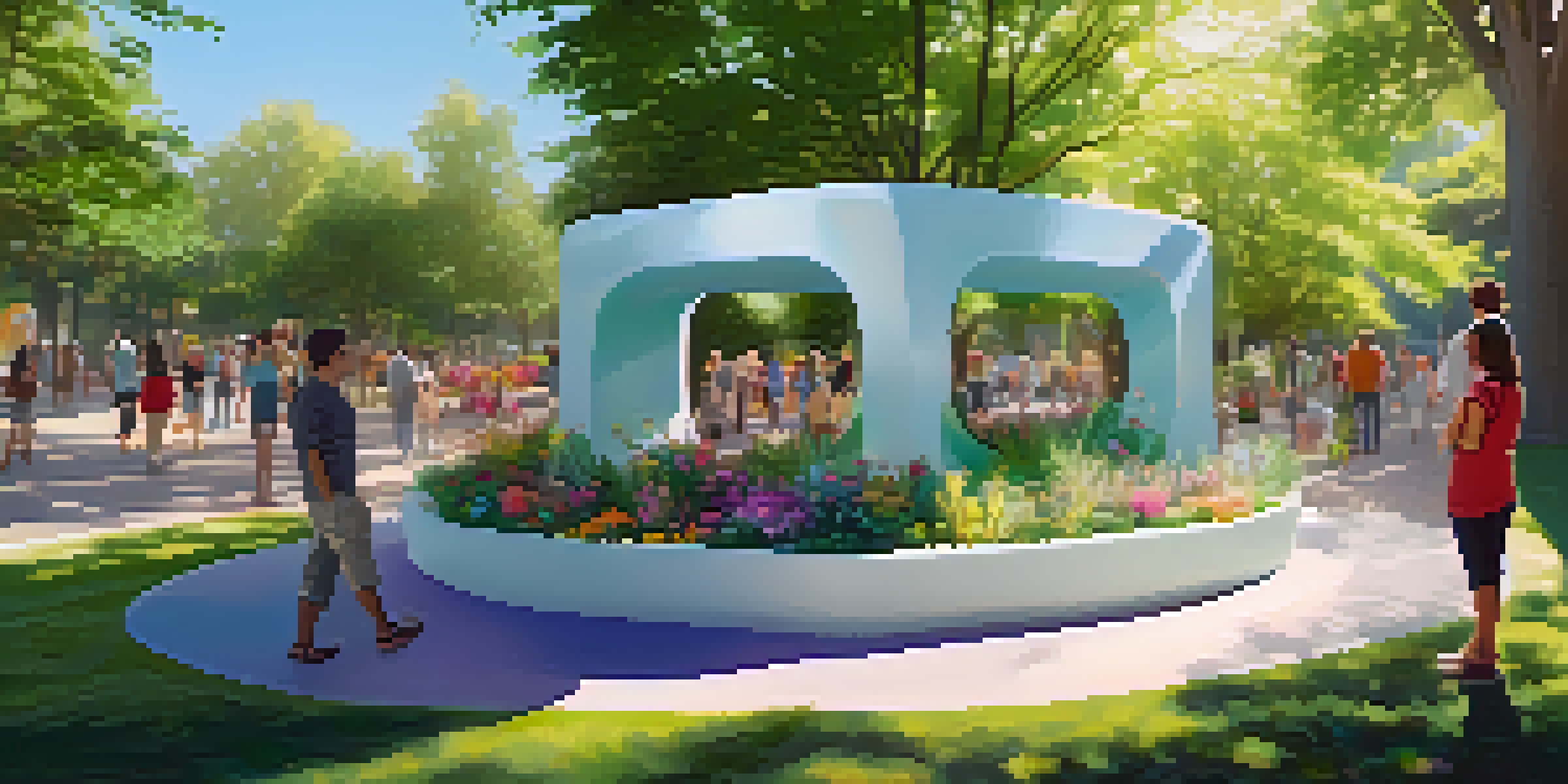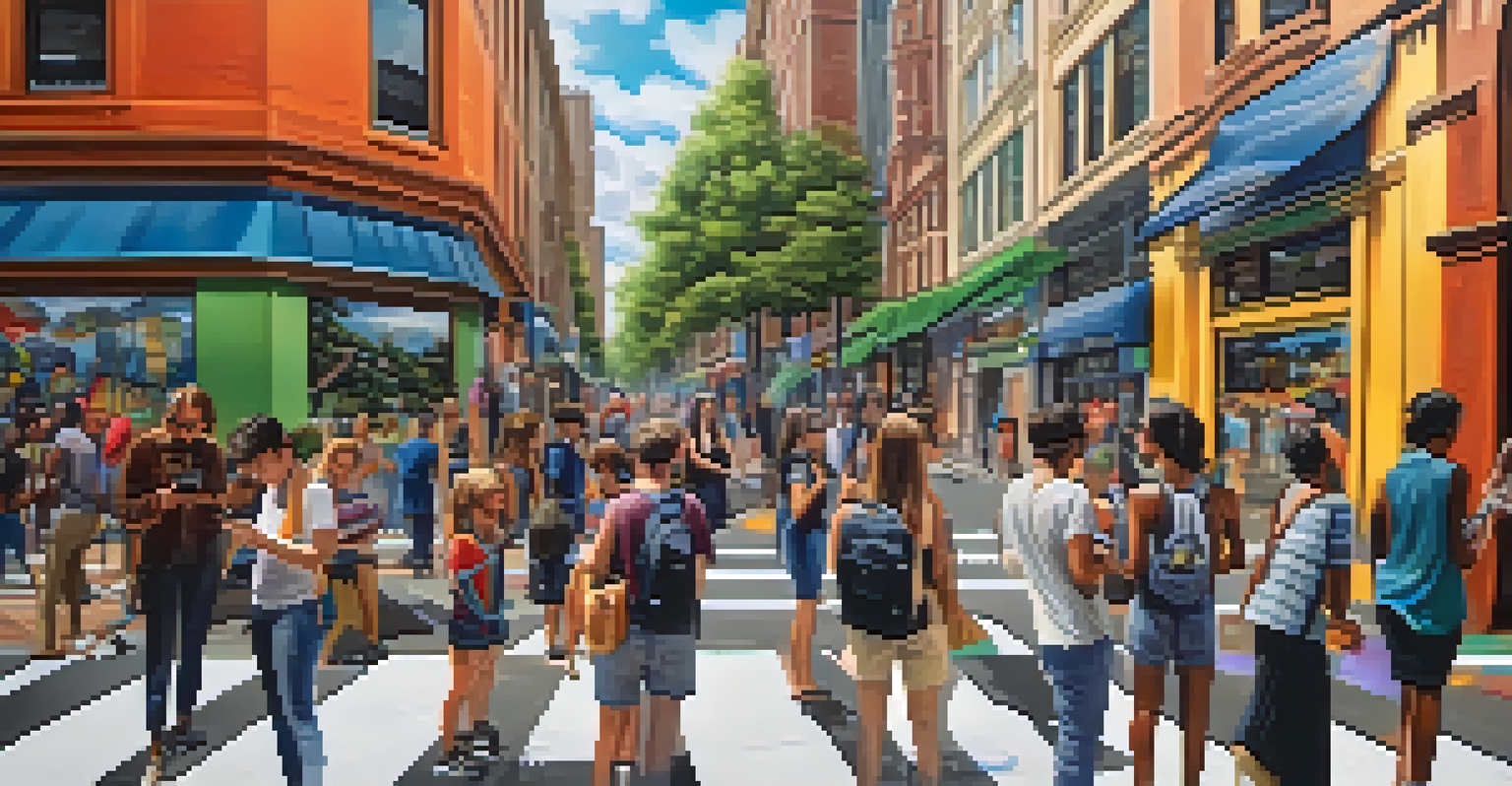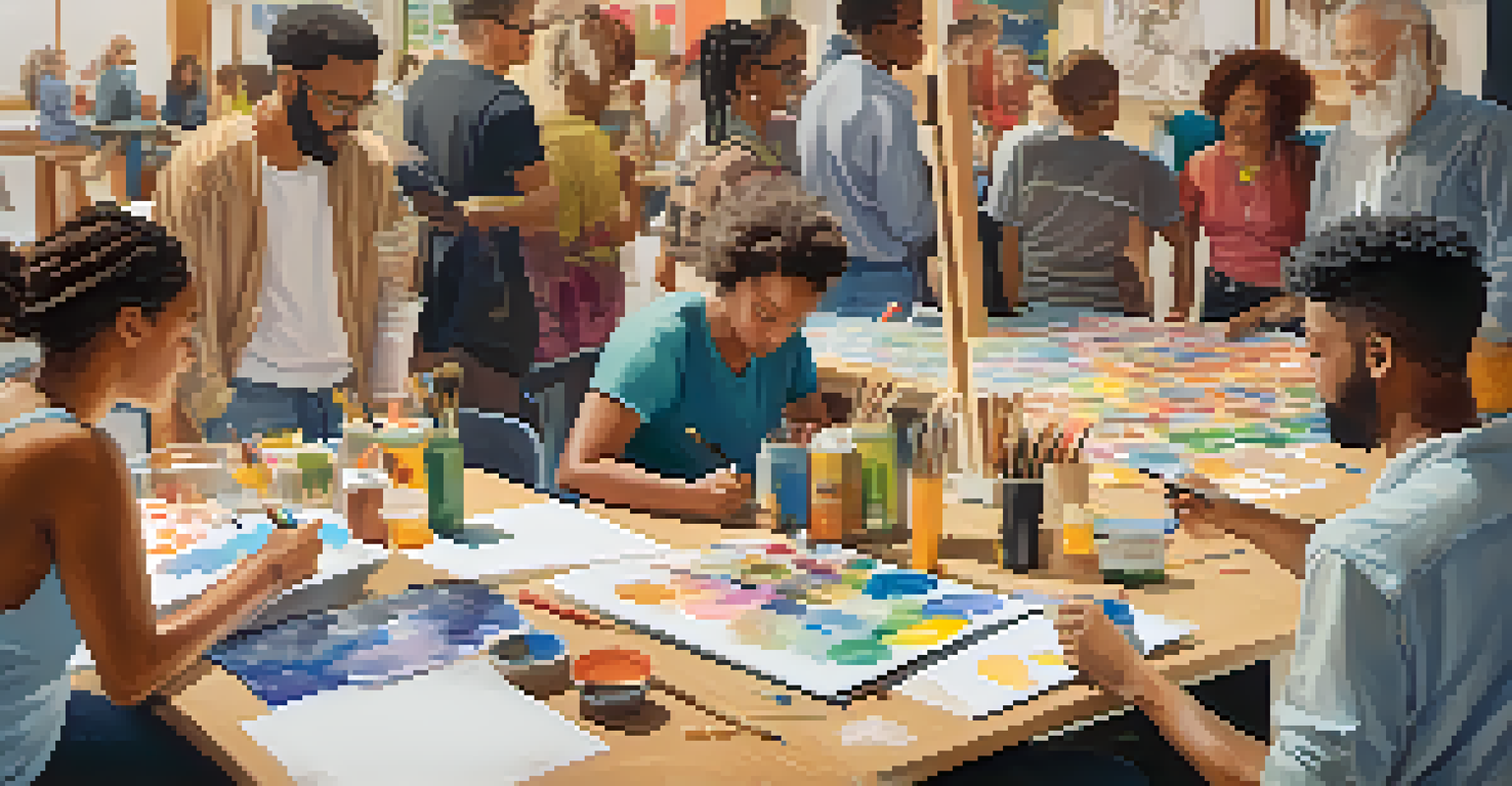Art and Technology: Interactive Installations in Public Spaces

The Fusion of Art and Technology in Public Spaces
Art and technology have merged in fascinating ways, especially in public spaces. Interactive installations invite the community to engage with art, blurring the lines between observer and participant. This fusion not only enhances the aesthetic appeal but also encourages deeper connections among people and their environment.
Art is not a thing; it is a way.
Imagine walking through a park and stumbling upon a digital sculpture that reacts to your movements. Such experiences make art accessible and relevant, turning everyday locations into dynamic galleries. The integration of technology allows artists to push boundaries and explore new forms of expression.
As cities evolve, the demand for innovative public art increases. Communities are embracing these installations as tools for social interaction, education, and cultural exchange, transforming mundane areas into vibrant hubs of creativity.
Engagement Through Interactivity: A New Experience
Interactive installations are designed to engage audiences in ways traditional art cannot. These experiences invite viewers to touch, move, and even communicate with the artwork, creating a personal connection. For instance, a projection that changes color based on the number of people nearby can transform a simple stroll into an immersive experience.

By incorporating user input, artists can create works that evolve over time, reflecting the community's spirit and energy. This ever-changing nature encourages repeated visits, as no two experiences are ever quite the same. It also fosters a sense of ownership and pride among local residents.
Art Meets Technology in Public Spaces
The fusion of art and technology in public spaces creates interactive installations that engage communities and enhance aesthetic experiences.
Moreover, the use of technology in art encourages dialogue about its role in society. As people interact with these installations, they often find themselves pondering broader themes around innovation, accessibility, and the nature of art itself.
Notable Examples of Interactive Art Installations
Several cities around the world have embraced interactive art installations, creating memorable experiences for residents and visitors alike. One standout example is 'The Obliteration Room' by Yayoi Kusama, where participants are encouraged to cover a white room in colorful dot stickers. This transformation symbolizes collective creativity and community involvement.
Technology is best when it brings people together.
Another remarkable installation is 'The Hive' in London, which features a sound-reactive sculpture mimicking the sounds of a beehive. As people interact with the installation, they contribute to an evolving auditory experience, blending nature and technology beautifully.
These examples highlight how interactive art can celebrate community and provoke thought, making them not just visual spectacles but also significant cultural landmarks.
The Role of Technology in Enhancing Art Accessibility
Technology plays a crucial role in making art more accessible to a broader audience. Through augmented reality (AR) and virtual reality (VR), individuals can experience art in ways previously unimaginable. For instance, an AR app can bring a static mural to life by overlaying digital animations, enriching the viewer's understanding and enjoyment.
Additionally, these technologies can bridge gaps for those who may not physically visit an installation. Online platforms now offer virtual tours of public art, allowing users from around the globe to engage with and appreciate these works from the comfort of their homes.
Interactive Art Fosters Community Pride
By involving local residents in the creation and interaction with art installations, communities develop a sense of ownership and connection.
By leveraging technology, artists and cities can ensure that art remains an inclusive experience, inviting diverse audiences to explore and celebrate creativity.
Challenges Faced by Interactive Installations
While interactive installations bring numerous benefits, they also face challenges. One major concern is the maintenance of technology, which can be costly and complex. Outdoor installations, in particular, must withstand weather conditions and possible vandalism, requiring regular upkeep to function optimally.
Additionally, the rapid pace of technological advancement can make installations feel outdated. Artists and municipalities must constantly innovate to keep the artwork relevant and engaging, which can be a daunting task.
Finally, there’s the challenge of accessibility for all users. Ensuring that interactive features are usable by individuals with varying abilities is crucial, and artists must consider inclusive design from the outset.
Community Involvement: Shaping Interactive Art
Community involvement is essential in shaping interactive art installations that resonate with local residents. Artists often collaborate with community members to gather insights and feedback, ensuring the artwork reflects the unique identity of the area. This participatory approach fosters a sense of ownership and pride among locals.
Moreover, workshops and outreach programs can engage the community in the creative process, allowing them to contribute ideas and even participate in the installation. Such involvement not only enriches the artwork but also strengthens community bonds.
The Future is Interactive and Sustainable
Advancements in technology and a focus on sustainability will shape the future of interactive art, making public spaces more vibrant and eco-friendly.
When residents feel a connection to the art in their public spaces, they are more likely to engage with it actively and advocate for its preservation, creating a sustainable relationship between art and community.
The Future of Art and Technology in Public Spaces
The future of interactive art installations in public spaces looks promising as technology continues to evolve. With advancements in AI and immersive experiences, artists will have even more tools at their disposal to create innovative works that challenge our perceptions. We can expect to see installations that adapt in real-time to their environment or audience, making each visit a unique journey.
Moreover, as urban spaces prioritize sustainability, there will likely be a greater emphasis on eco-friendly materials and practices in creating installations. Artists will be challenged to blend technology with sustainability, ensuring that their work not only captivates but also respects the environment.

Ultimately, the ongoing dialogue between art and technology will redefine our public spaces, making them more vibrant and engaging. As communities continue to embrace these changes, we can look forward to a future rich with creativity and interactivity.